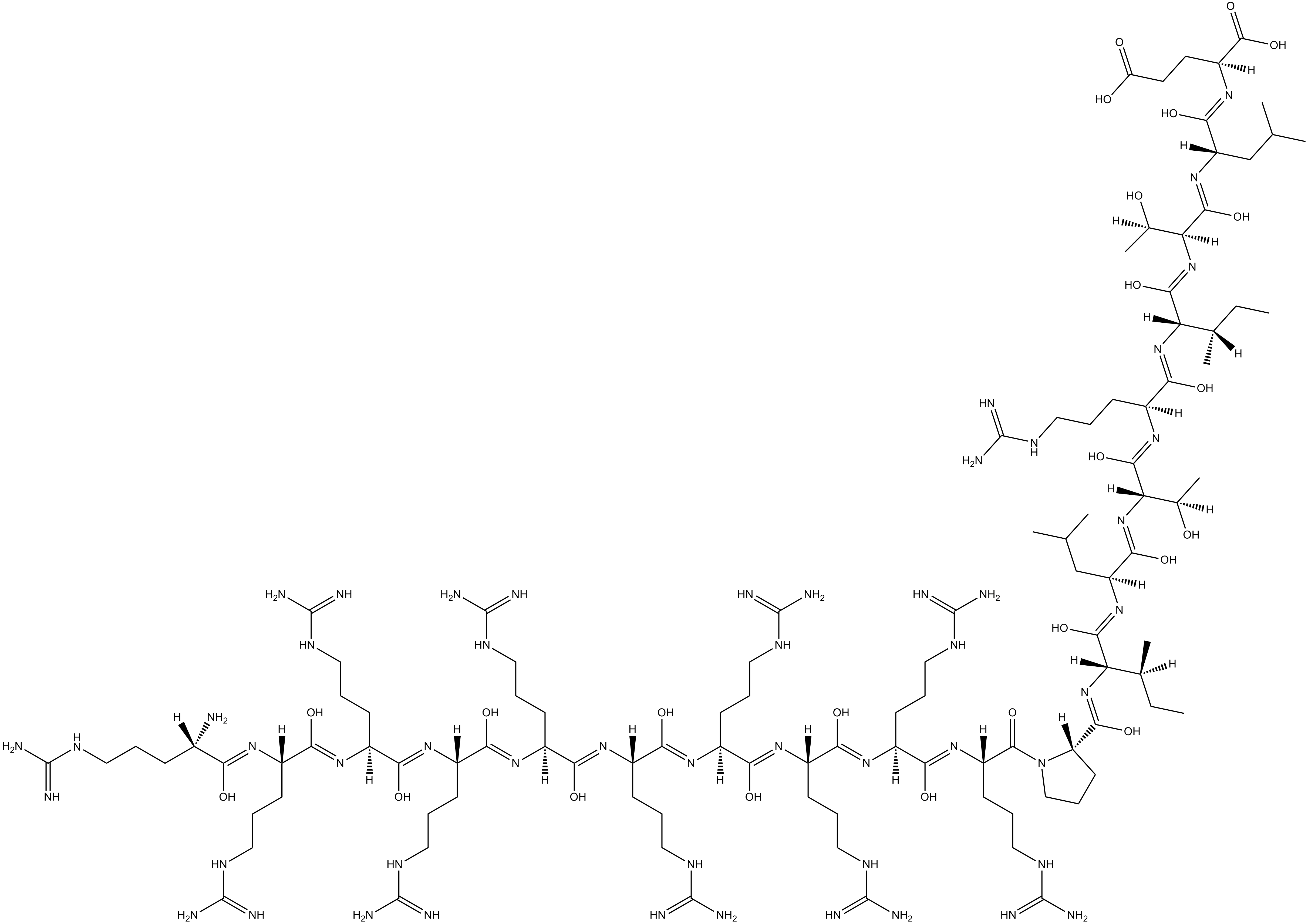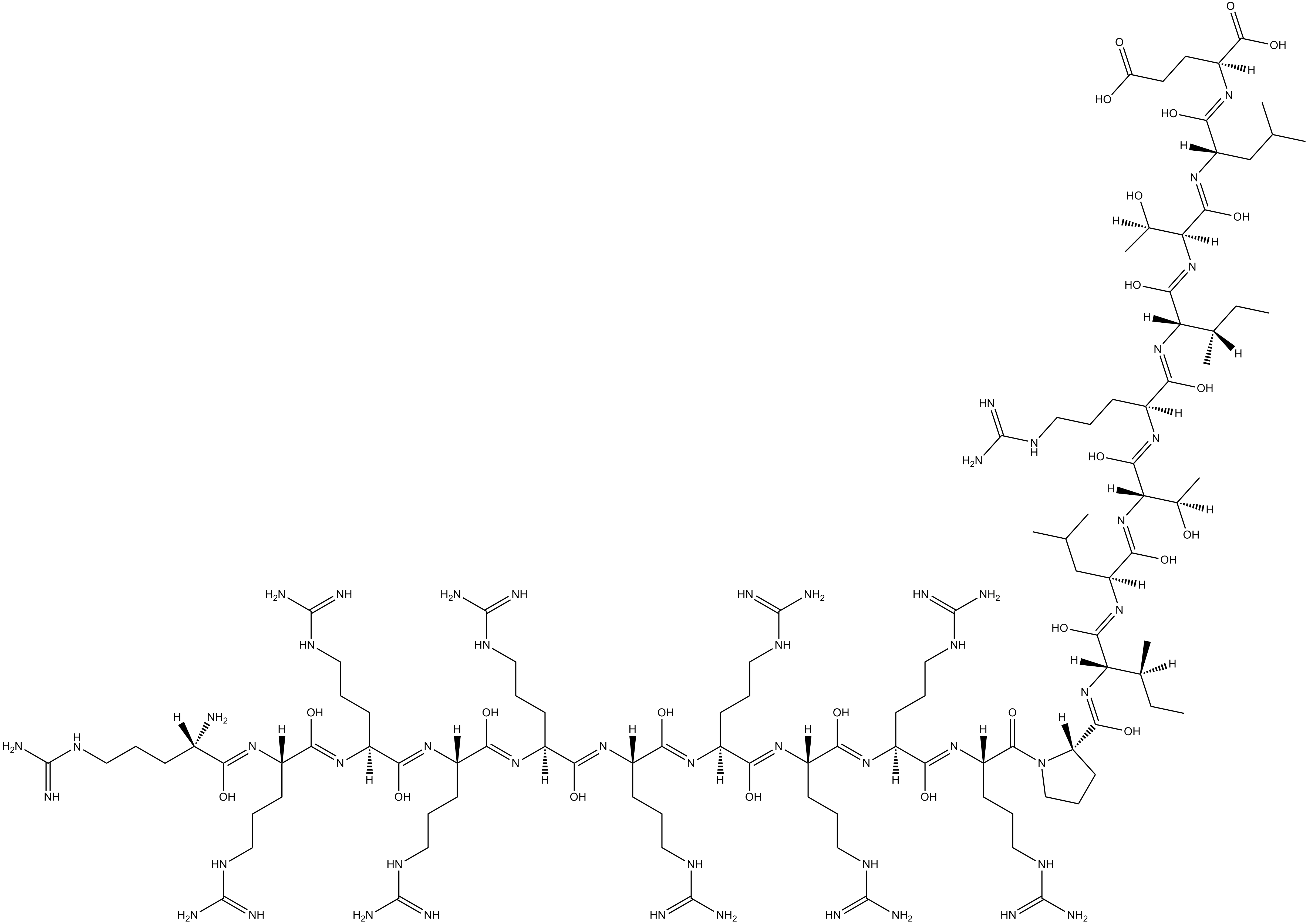ReACp53
ReACp53 is an inhibitor of p53 amyloid formation.
Nearly half of all human cancers lose p53 function by missense mutations, with an unknown fraction of these containing p53 in a self-aggregated amyloid-like state.
In vitro: Previous study found that ReACp53 could penetrates into HGSOC primary cancer cells and convert mutant p53 from a punctate state into soluble wild-type-like p53. ReACp53 could also induce cell-dycle arrest, cancer cell death, resulting in p53 Degradation. Moreover, ReACp53 induced quich cell death in human primary uterine fibroblasts transfected with a R175H p53 mutant. In addition, ReACp53 was found to be able to specifically reduce the cell viability and proliferation of cancer cells with mutant but not wild-type p53 [1].
In vivo: Animal study showed that i.p. administered ReACp53 could rapidly enter the systemic circulation and could be detected in the mouse serum at the 1-hr time point. In addition, ReACp53 could be detected in tumor tissue. In efficacy models, tumor volumes monitored daily suggested that only ReACp53-treated OVCAR3 xenografts shrank whereas vehicle-treated tumors grew more than doubled in size. Moreover, mutant p53-bearing tumors in the ReACp53-treated mice were 80%–90% smaller in weight than the control cohort, further confirming the ability of ReACp53 to inhibit tumor proliferation in vivo [1].
Clinical trial: Up to now, ReACp53 is still in the preclinical development stage.
Reference:
[1] Soragni A et al. A Designed Inhibitor of p53 Aggregation Rescues p53 Tumor Suppression in Ovarian Carcinomas. Cancer Cell. 2016 Jan 11;29(1):90-103.
| Storage | Store at -20°C |
| M.Wt | 2617.13 |
| Cas No. | N/A |
| Formula | C108H206N52O24 |
| Solubility | Soluble in DMSO |
| Chemical Name | (S)-2-((Z)-((1Z,3S,4Z,6S,7Z,9S,10Z,12S,13Z,15S,16Z,18S,19Z,21S)-3,15-di((S)-sec-butyl)-1-((S)-1-((6S,7Z,9S,10Z,12S,13Z,15S,16Z,18S,19Z,21S,22Z,24S,25Z,27S,28Z,30S,31Z,33S)-1,6-diamino-9,12,15,18,21,24,27,30,33-nonakis(3-guanidinopropyl)-7,10,13,16,19,22,2 |
| SDF | Download SDF |
| Canonical SMILES | CC[C@]([C@@](/N=C(O)/[C@]1([H])CCCN1C([C@](/N=C(O)/[C@](/N=C(O)/[C@](/N=C(O)/[C@](/N=C(O)/[C@](/N=C(O)/[C@](/N=C(O)/[C@](/N=C(O)/[C@](/N=C(O)/[C@](/N=C(O)/[C@](N)([H])CCCNC(N)=N)([H])CCCNC(N)=N)([H])CCCNC(N)=N)([H])CCCNC(N)=N)([H])CCCNC(N)=N)([H])CCCNC(N) |
| Shipping Condition | Small Molecules with Blue Ice, Modified Nucleotides with Dry Ice. |
| General tips | We do not recommend long-term storage for the solution, please use it up soon. |
Quality Control & MSDS
- View current batch:
-
Purity = 98.00%
- COA (Certificate Of Analysis)
- MSDS (Material Safety Data Sheet)
- Datasheet
Chemical structure









